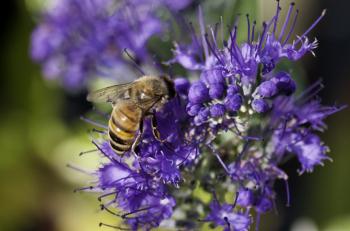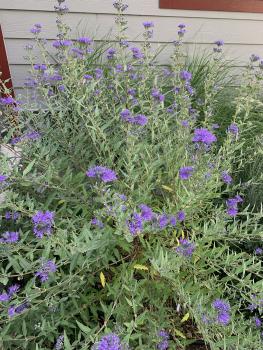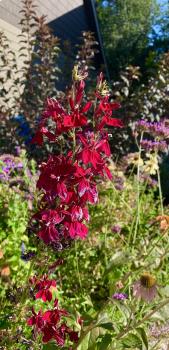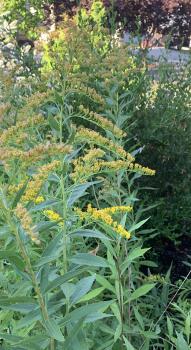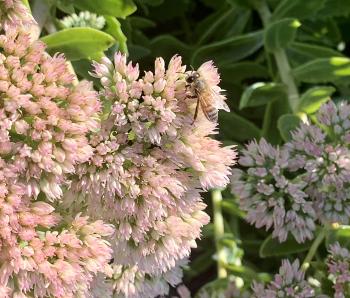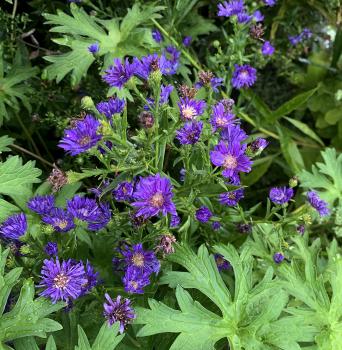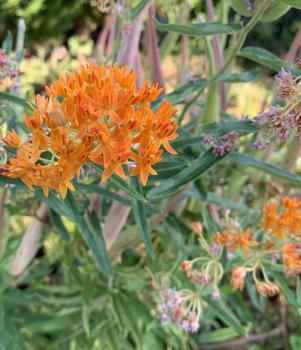Professional Native Landscape Design
Call for a FREE consultation: (541) 301-5374
Blog Post
Planning your Autumn Pollinator Garden
posted: September 4th, 2020
Fall Blooming Garden
As the summer fades and we're all out cleaning our garden beds, what remains blooming after our echinacea, rudbekia and the other summer "star" bloomers have faded? Well, if you have planned correctly, you will still have food for your local pollinators in abundance.
- Caryopteris (Bluebeard, Blue Spirea or Blue Mist) is something I try to add to every Rogue Valley garden. A native of the Himalayas and East Asia, this compact, deciduous shrub has a rounded habit and bears a profusion of fragrant, deep blue-purple flowers from late summer through Fall. More than just attractive to bees and butterflies, it's COVERED with them morning to night. Grow these in full sun. They are drought tolerant once established but need adequate drainage. They can get pretty big, (6'x6*, but a recent smaller cultivar called "Sapphire Surf" has been created for smaller gardens (4'x4).
- Lobelia Cardinales - Cardinal Flower. Another terrific late-summer bloomer, this N American native is easy to grow from seed and in our area is often grown as an annual. This one is making its appearance for the second year in my butterfly beds. They like full sun (for the best color) or light shade and prefer evenly moist, well drained soils. They will tolerate drought, poor soils, and are very hardy. They display tons of flowers on tall, upright stems that are frequented by hummingbirds throughout the day. Dead head these for neat appearance and longer bloom. Deer and rabbit resistant.
- Solidago - Goldenrod. Another NA native, this upright (4'-5' high) and aggressive plant grows in full sun. It spreads by rhizomes and can self-seed in your neighbor's yard, so be very careful where you plant it! Solidago provides great end of season color and pollen and is attractive to bees and butterflies. Cut off the spent flowers before they go to seed to keep it from invading your neighbor's property.
- Autumn Joy Stonecrop Sedum blooms August through November here. Flowers go from pink to copper. Sedum can take hot, dry conditions and looks great with grasses or in containers like this one in front of my neighbor's garage.
- Purple Aster - These beauties flower when most other plants have finished for the season and provide welcome nectar for bees and butterflies. These plants tend to spread and can get big and take over a bed. I divide them every 2-3 years and give away the excess to friends.
- Asclepias Tuberosa - a variety of milkweed native to the eastern US. These plants require full sun and attain a size or 12"-18" high and wide. They bloom from June through September and produce loads of milkweed seeds. Keep the water medium to dry. All asclepias have multiple flower clusters that attract monarchs and other butterflies as well as native and honey bees. This plant isn't fussy and will tolerate deer, drought, dry and rocky soil, but don't try moving an established plant as their tap roots do not like to be disturbed!


